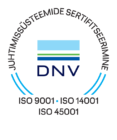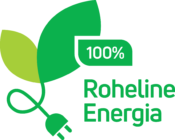Nordecon AS has concluded, on schedule, the design and construction works of construction site no 5 of the west side bypass of Tartu city, which included the renovation of the road section leading to the airport intersection, and the merging of three viaducts and one tunnel. Among other things, a concrete railway overpass, weighing around 300 tons, was installed through unique bridge lifting during the construction works at the intersection of Tõrvandi.
"The road section completed on the western bypass of Tartu, stretching from Lemmatsi road to the airport intersection, is a major traffic junction, which is used by more than 14,000 drivers daily – from local motorists to transit operations," said Erkki Suurorg, member of the board of Nordecon AS. "During the construction works, the Tõrvandi intersection was built into a multi-level interchange junction, and as a result, the traffic, as well as the pedestrian and cycle paths between Tõrvandi and Ülenurme began to operate below the main road and the railway. For Nordecon, the construction of the railway viaduct meant a fascinating engineering challenge, to which all parties to the project responded flawlessly."
Erkki Suurorg said that the contractor had had to install a pre-fabricated 295-tonne concrete railroad overpass in the construction of the Tõrvandi intersection during a 31-hour interruption of rail traffic. It was a unique bridge lifting prepared three months in advance, and carried out with one of the biggest mobile cranes in the world, which was transported to Estonia for that purpose.
"The site was completed and delivered to the client in November, but the new road was, of course, open for its use by the citizens before that. The completed road section allows drivers to get to the airport intersection in considerably smoother and safer conditions than in the past, and the maximum permitted speed limit has also been raised," says Erkki Suurorg.
A motorway, mostly with two lanes in both directions, together with the related utility networks, was designed and built on the 3-kilometer road section of the Tallinn-Tartu-Võru-Luhamaa motorway, from Lemmatsi road to Lennujaama (Airport) road. In addition, two motorway overpasses, a railway overpass, as well as a bicycle and pedestrian tunnel were built on this road section. Also, the intersecting streets and access roads were reconstructed, and the Tamme street connecting road and the Lennujaama (Airport) street section, with a roundabout intersection, were fully developed. Also, dust-free covering was laid on about 7 km of local secondary roads.
The total length of the west Tartu bypass is 12 kilometres, and it runs along the Tallinn-Tartu-Võru-Luhamaa route from Kandiküla to Uhti. The construction of the bypass is divided into six construction stages. As a result of the construction works, the western bypass of Tartu is to be built into a first-class, predominantly four-lane motorway.
Works on construction site no 5, set up by Nordecon, on the west Tartu bypass, began with the design work in August 2014, and lasted for 15 months. The project was commissioned by the Road Administration (Maanteeamet), and it was 85% co-funded by the European Union Cohesion Fund. The cost of the construction works was 8.4 million euros, not including VAT.









